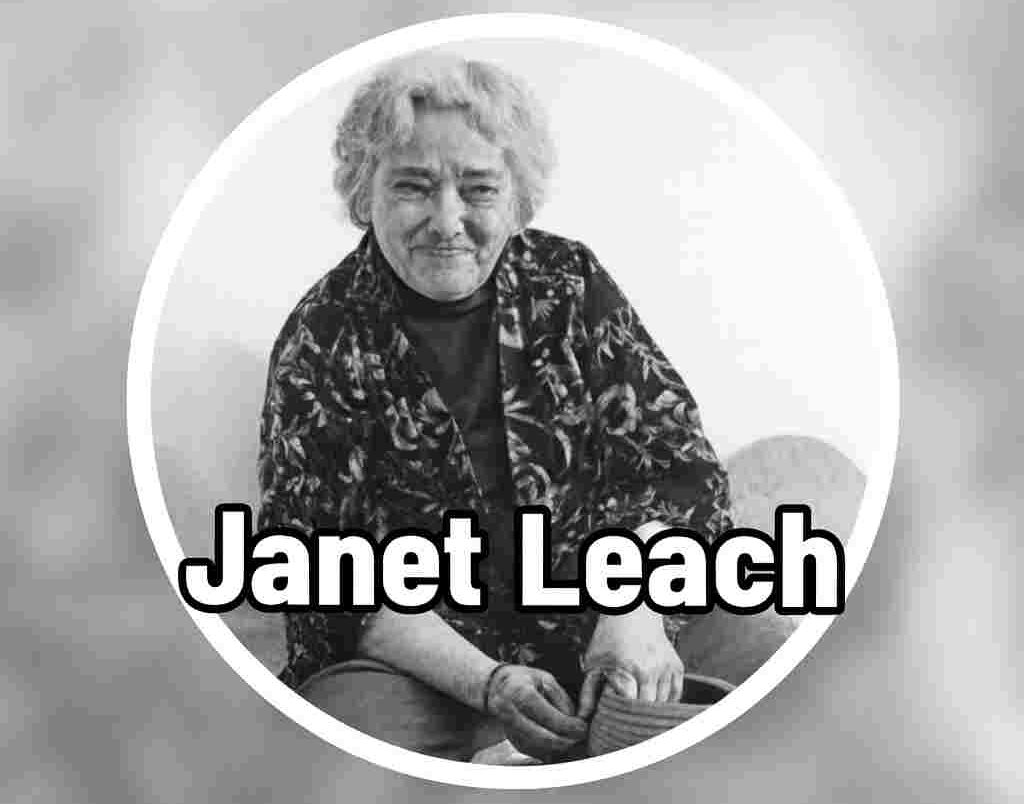Janet Leach: The Trailblazing Potter Who Redefined Studio Ceramics
A Journey of Passion, Perseverance, and Artistic Independence

Introduction
Janet Leach was a visionary American studio potter who broke barriers in the world of ceramics with her bold creativity and determination. Known for her unique artistic style and independence, Janet Leach played a pivotal role in shaping the modern studio pottery movement. Her life story is a fascinating blend of courage, cultural exchange, and unwavering dedication to her craft.
From her early years in Texas to becoming the first foreign woman to study pottery in Japan, Janet Leach’s journey was extraordinary. She refused to be overshadowed by her husband, Bernard Leach, one of the most influential figures in ceramics. Instead, she carved her own path, creating timeless works of art that continue to inspire potters and art lovers worldwide.
Quick Bio of Janet Leach
| Field | Details |
|---|---|
| Full Name | Janet Darnell Leach |
| Date of Birth | 15 March 1918 |
| Birthplace | Grand Saline, Texas, United States |
| Nationality | American |
| Spouse | Bernard Leach |
| Profession | Studio Potter, Ceramic Artist |
| Date of Death | 12 September 1997 |
| Famous For | First foreign woman to apprentice under Shoji Hamada in Japan |
Early Life and Education
The Texas Roots and Artistic Dreams
Janet Leach was born in Grand Saline, Texas, into a Methodist family. From a young age, she displayed a strong interest in the arts and creativity. As she grew older, her passion for sculpting and creating tangible works of art became evident. This passion drove her to move to New York City, where she trained as a sculptor under the well-known artist Robert M. Cronbach.
During the late 1930s, she was also involved in the Federal Works Art Project, where she contributed to public art initiatives. These experiences shaped her understanding of both traditional and contemporary artistic practices, laying the foundation for her future career in ceramics.
World War II and the Turning Point
When World War II began, Janet Leach worked as a welder in a Staten Island shipyard, building essential parts for naval ships. This work, while far from the artistic world, reflected her strength and resilience during challenging times.
After the war, Janet shifted her focus back to the arts. She began experimenting with pottery and teaching ceramics at Rockland State Hospital in New York. This period marked a turning point, as she discovered her deep connection to clay and the expressive possibilities of pottery.
Journey to Japan and Cultural Breakthrough
Meeting the Masters
Janet’s passion for pottery reached new heights when she attended Black Mountain College in North Carolina. There, she encountered two legendary figures in studio pottery: Shoji Hamada of Japan and Bernard Leach of England. Their work and philosophies fascinated Janet, particularly the simplicity and spiritual depth of Japanese pottery.
In 1954, Janet achieved what many thought impossible — she traveled to Mashiko, Japan, and became the first foreign woman to apprentice under Shoji Hamada. This was a groundbreaking moment, as traditional Japanese apprenticeships were deeply exclusive. Her time in Japan profoundly influenced her artistic style, blending Japanese traditions with her own creative instincts.
Marriage and Move to St Ives, England
Joining the Leach Pottery
In 1956, Janet married Bernard Leach and moved to St Ives, Cornwall, where she became an integral part of the famous Leach Pottery. While Bernard’s influence was significant, Janet maintained her independence, refusing to simply follow his established style.
Instead, she introduced fresh ideas and bold techniques. Her work was characterized by rugged forms, natural textures, and minimal decoration, focusing on the raw beauty of clay and fire. This unique style set her apart from other potters of her time.
Distinctive Artistic Style
Janet Leach’s pottery was a harmonious blend of Japanese philosophy and Western modernism. She worked primarily with stoneware and porcelain, employing techniques like wheel throwing, hand-building, and wood-firing.
Her pieces often embraced imperfection, celebrating the marks of the process — whether brush strokes or fire effects. This approach gave her work a sense of authenticity and vitality, making each piece a statement of individuality.
Career Achievements and Recognition
Throughout her career, Janet Leach exhibited her pottery internationally, gaining recognition for her innovative contributions. After Bernard Leach’s death in 1979, she continued running the Leach Pottery independently, proving her leadership and dedication to the craft.
Her works are now housed in prestigious collections, including the Victoria and Albert Museum, Tate St Ives, and the Oxford Ceramics Gallery. In 2006–2007, Tate St Ives hosted a major retrospective exhibition, celebrating her life and artistry.
Legacy of Janet Leach
Janet Leach’s legacy extends beyond her pottery. She broke cultural and gender barriers, proving that women could excel in a traditionally male-dominated field. Her journey inspired countless artists to embrace their individuality and pursue their creative visions fearlessly.
Today, her works are studied and admired worldwide for their spiritual depth, simplicity, and raw elegance. The 2024 publication of Janet Leach: Potter has renewed global interest in her story, ensuring her contributions will never be forgotten.
Conclusion
Janet Leach was more than just the wife of Bernard Leach — she was a powerful, independent artist whose work reshaped modern studio pottery. Her life story is one of courage, resilience, and artistic brilliance. By blending Japanese traditions with Western innovation, she created timeless works that continue to inspire.
Her legacy lives on in museums, books, and the hearts of ceramic artists around the world. Janet Leach’s journey serves as a reminder that true artistry comes from staying true to oneself, even when faced with challenges and doubt.
Frequently Asked Questions (FAQ)
Who was Janet Leach?
Janet Leach was an American studio potter renowned for her independent artistic style and for being the first foreign woman to apprentice under Japanese master Shoji Hamada.
Where was Janet Leach born?
She was born in Grand Saline, Texas, United States, on 15 March 1918.
What was Janet Leach’s connection to Japan?
Janet studied pottery in Mashiko, Japan, under Shoji Hamada, where she mastered traditional Japanese techniques that heavily influenced her work.
Was Janet Leach married?
Yes, she married Bernard Leach, a celebrated British potter, in 1956.
Where can I see Janet Leach’s work today?
Her pottery is displayed in major collections such as the Victoria and Albert Museum, Tate St Ives, and other leading ceramic galleries.
Why is Janet Leach significant in the world of pottery?
She broke barriers for women in ceramics, introduced cross-cultural techniques, and developed a bold, individual style that influenced generations of potters.



